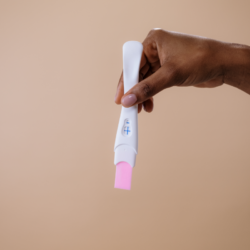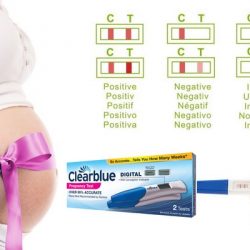The use of homeopathic medicines, appropriately chosen according to their pathogenic symptoms, can facilitate labour, prevent immediate complications of childbirth, treat lactation problems and restore general health.
Which homeopathic treatment should I choose to ease labour?
This article eliminates all mechanical causes that prevent labour from proceeding normally (narrowed pelvis, placenta previa, etc.), with the exception of difficulties in expulsion due to cervical dystocia.
In women who are assumed to be able to give birth normally, particularly primiparous women for whom labour is always longer than in multiparous women, the following two drugs can be taken almost systematically:
Actaera racemosa :
This homeopathic medicine, whose preferential pathogenetic target is the female genital organs, is used to treat strong and irregular labour pains caused by cervical spasms which interfere with dilation.
Improvement occurs by flexing the thighs over the pelvis. Painful irritation of the hips is common.
Dosage: It can be taken as a preventive measure, 15 days before the theoretical date of childbirth. 5 CH 7 or 9 granules morning and evening. These should be taken every half hour from the start of labour, and then every quarter of an hour after the amniotic membrane has ruptured.
Caulophyllum :
This homeopathic remedy is used for very violent, irregular, ineffective, cramp-like labour pains, which do not give a “downward thrust”, due to rigidity of the uterine cervix. These pains radiate to both groins, the bladder and the lower limbs.
Dosage: Take 4 or 5 CH at the same rate as Actaea racemosa. These 2 medicines are taken alternately during labour.
Particularly in primiparous women, there may be a certain amount of anxiety at the end of pregnancy, a fear in anticipation of giving birth. Medicines indicated for stage fright and acute emotional reaction disorders are then indicated. Ignatia and Gelsemium are the most frequently prescribed.
What preventive homeopathic treatment for the immediate aftermath of childbirth?
Following expulsion of the foetus, it is useful to take, on a systematic basis, 3 medicines whose pathogenesis corresponds to the reactional symptoms commonly observed:
- Pain in the perineal and ano vulvar regions.
- Vascular problems: haemorrhoids, risk of uterine haemorrhage, risk of phlebitis, petechiae on the face appearing in mothers who have made great efforts to expel the baby.
- Asthenia.
- Reactive febrile syndrome, even infectious.
Arnica montana :
Arnica Montana is a well-known homeopathic remedy, often used to treat a variety of physical ailments. Native to the mountains of Europe and Siberia, this plant was long used in traditional medicine before becoming a central element of homeopathy. It is useful for both preventing and treating :
- Pain and oedematous reaction following trauma to the perineal and ano vulvar regions.
- Post-partum haemorrhagic risks.
- Acute haemorrhoidal accidents.
- Thrombophlebitic risks.
- Painful adynamic febrile syndromes.
Dosage: Take 5 granules of Arnica 7 or 9 CH twice a day.
China rubra :
Medicine for asthenia, weakness, anaemia and arterial hypotension following loss of body fluids, its homeopathic indication is based on this notion as well as that of bloating and abdominal meteorism with contact hyperaesthesia.
Dosage: Take 7 or 9 CH in the morning on waking for 10 to 15 days.
Pyrogenium :
Pyrogenium is a homeopathic remedy known mainly for its effectiveness in treating septic conditions and serious infections with offensive discharge. Today, it is used to treat various types of typhoid fever, empyema (accumulation of pus around the lungs), severe sinusitis, post-partum infections, blood septicaemia and more.
Biotherapic prepared from a septic autolysate of a mixture of beef, pork and human placenta, it helps prevent adynamic fever syndromes of infectious origin.
Dosage: Take a 9 CH tube-dose in the evening at bedtime for a week, for example.
What treatments are there for lactation problems and restoring good general health?
As far as possible,breast-feeding should be preferred to any other form of nutrition, especially as artificial feeding seems to favour allergic reactions in genetically predisposed individuals. During breastfeeding, a number of disturbances can occur:
Insufficient milk supply:
Lactation can be encouraged by the use of the following medications, combined of course with correct diet and hydration:
-
Ricinus communis :
Ricinus Communis, commonly known as “Castor Oil Plant” or “Arand”, is a homeopathic remedy derived from the seeds of the Ricinus communis plant, belonging to the Euphorbiaceae family. It is used in homeopathy mainly for its effects on the digestive system, menstrual disorders and certain skin conditions. Here, the use of low dilutions increases secretion in hypogalactorrhoea.
Dosage: Take 5 granules of Ricinus 5 CH, 2 times a day.
-
Agnus castus :
Chaste tree has been known since ancient times for its depressant action on genital functions and sex hormone secretions. For a long time, this substance was used, in moderate doses, as an aid in keeping the vow of chastity. It also has a depressive effect on the psyche. It is therefore used in homeopathic therapy to treat the agalactia of young women giving birth with a reactive depressive syndrome.
Dosage: Take 5 granules of Agnus castus 5 CH 2 times a day.
-
Alfalfa 6DH
Recommended dosage: Take 5 granules before each breast-feeding, then interval the dose to every other feeding, depending on the effectiveness observed.
Breast engorgement leading to breast abscess :
When galactorrhoea is abundant, a congestive, inflammatory and painful process may be observed in part of a mammary gland, which may be accompanied by a febrile reaction. The use of homeopathic therapy allows these symptoms to subside rapidly. It avoids the use of antibiotics which, because they pass into the mother’s milk, can make it necessary to stop breast-feeding.
Four drugs should be discussed:
-
Belladonna :
In homeopathy, Belladonna is frequently used to treat a variety of conditions. These include headaches and migraines, particularly when the pain is of the pulsatile type, generally located in the temporal region of the head. Belladonna is also renowned for its effectiveness in treating throat symptoms such as sore throat and tonsillitis, particularly in acute cases where the throat appears red, shiny, painful, swollen and inflamed. The pain is often intensified by swallowing.
In the aftermath of childbirth, this medicine is the symptomatic treatment for inflammation:
– Sudden swelling.
– Redness of the integuments with shiny, taut skin.
– Pulsating pain.
– Intense, radiant heat, with a burning sensation.
There is no clear or characteristic improvement with heat or cold, nor is there thirst. The only general signs to remember are, if they exist, a general hypersensitivity of the patient, a cephalic congestion with depression, abundant sweating which relieves and, sometimes, an increase in temperature.
Dosage: Take 5 granules of Belladonna 7 or 9 CH every hour, then space out the doses as the intensity of the symptoms diminishes.
-
Apis mellifica :
This medicine corresponds to severe inflammatory oedema of an area where the subcutaneous cellular tissue is loose. The skin is less red and shiny (sometimes matt) than in the case of Belladonna. This oedema is burning, prickly and improved by cold applications. The patient may experience alternating sweating and dry skin. She may be febrile but not thirsty.
Dosage: Take 5 granules of Apis mellifica 7 or 9 CH every hour, then space out the doses as the intensity of the symptoms diminishes.
-
Bryonia alba :
Bryonia alba, also known as Bryone blanche, is a homeopathic remedy used in various medical fields such as rheumatology, infectiology, gastroenterology, gynaecology and ophthalmology. The breast is engorged, very heavy and hard as a rock. It is the site of severe pain aggravated by the gland jiggling, requiring the wearing of a tight bra when walking. The teguments are only slightly rubescent. If there is a febrile reaction, this is moderated and accompanied by intense thirst.
Same dosage.
-
Rana bufo :
Rana Bufo, a homeopathic remedy is mainly used to treat conditions related to lymphangitis, an inflammation of the lymphatic vessels often caused by bacterial infections. It is the specific remedy for localised lymphangitis.
Dosage: Take 5 CH every 3 or 4 hours, then space out the doses as the condition improves.
Cracks in the nipple :
It is especially important to avoid their appearance by preventive local care, which should begin in the month preceding childbirth. To achieve a kind of nipple tanning, the mother-to-be should apply a mixture of equal parts 45° alcohol and glycerine to the tips of her breasts twice a day. This practice is continued after each feed during the breastfeeding period.
If a crack appears, apply a little Castor Equi ointment after the glycerine alcohol, then cover with a sterile gauze pad. In this case, before each feed, the nipples should be rinsed with boiled water or non-carbonated mineral water until the ointment has been removed. In addition, two homeopathic medicines will help heal fissures:
-
Graphites :
This medicine is indicated for cracks in the nipple from which a thick, viscous, yellow, honey-like ooze flows. When the discharge dries, a more or less thick crust appears, varying in colour from light yellow to yellow-brown. Discharge and crusting often coexist on the same lesion.
To stop the oozing, high doses of this natural remedy are used.
Dosage: Take 5 granules of Graphites 15 CH morning and evening. Take at intervals according to improvement. Nitricum acidum 9CH is preferred to relieve cracks that tend to bleed.
Asthenia during breastfeeding :
This asthenia is fairly quickly corrected by the use of one or more of the following medicines:
-
China rubra :
Graphites, manufactured by Boiron, is a homeopathic remedy mainly used in dermatology, gastroenterology and gynaecology. It is a remedy for weakness, anaemia and asthenia following significant loss of body fluids.
Dosage: Take 5 x 7 or 9 CH granules twice a day for 1 month.
-
Silicea :
This medicine for asthenia, emaciation and demineralisation has a warning sign in the form of back pain during breast-feeding. Young women may also experience excessive coldness and profuse sweating, especially in the feet.
Recommended dosage: Take 5 granules 2 times a day or a daily tube-dose of 9 CH for 1 month.
Demineralisation can also be treated by :
-
Calcarea phosphorica :
This medicine is used to treat various conditions related to bones and teeth, as well as growth disorders in children. It also helps relieve joint pain, convalescence and anaemia. This is why we recommend it for women with a long build, a tendency to be thin and the following phenotype:
– Dolichocephaly
– Rectangular teeth with a large vertical axis
– Long hands with fingers longer than the palm
– Relative ligament hyperlaxity
– Tendency towards dorsal kyphosis or kypho-scoliosis
Dosage: Take 5 granules 2 times a day or a daily tube-dose of 9 CH for 1 month.
-
Avena sativa and Alfalfa :
These 2 medicines used in low dilutions have an aperitive and general stimulating action.
Persistence of galactorrhoea after weaning:
Once lactation has started, it is maintained by sucking the nipples, if there is sufficient hydration. At the time of weaning, the reduction in the frequency of feedings, combined with relative dehydration caused by the use of mild diuretics, should in principle cause milk secretion to dry up. However, a number of women experience persistent galactorrhoea. For these women, :
-
Ricinus communis :
Ricinus communis, available in homeopathic granules, is a herbal remedy. It is mainly used in gastroenterology and obstetrics, in particular to treat constipation and agalactia (absence of milk production). The homeopathic doctor determines the appropriate dilution and dosage according to the patient’s symptoms and state of health. Ricinus communis can also be used to stimulate lactation and in cases of pain associated with lactation. This medicine contains sucrose and lactose and should be stored away from light, heat and moisture. Already mentioned above for promoting lactation by using it in low dilutions, this medicine is used here in high dilutions to obtain the opposite effect.
Dosage: Take 5 granules of Ricinus 30 CH 2 times a day until secretion stops.
Relative transient alopecia in a more or less depressive context:
Hair loss of varying severity frequently occurs in the weeks following childbirth. This reason for consultation is very often accompanied by a more or less discreet classic reactionary anxiety-depressive syndrome. Homeopathic treatment can resolve this problem by treating the area in question with both basic and symptomatic medicines. In the case of transient alopecia, hair regrowth is observed more rapidly with the addition of :
-
Eberthinum or Paratyphoidinum B :
Typhoid fevers are known to cause abundant hair loss at the end of their course. These biotherapics, prepared from lysates of Salmonella typhi or paratyphi B cultures without the addition of antiseptics, are recommended here in 15 CH, in weekly or fortnightly doses.





